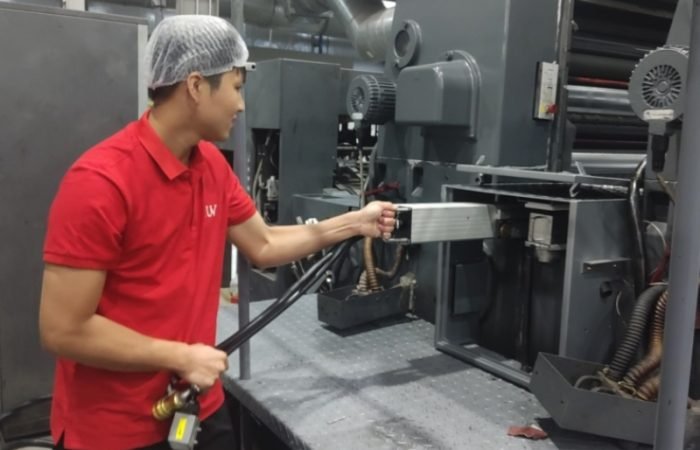If you’re running a label, flexo, or narrow-web offset operation, ink costs and waste likely keep you up at night. Let’s cut through the jargon and explore actionable strategies to stretch ink mileage while slashing waste in UV offset workflows. No fluff—just practical fixes rooted in process engineering and LED UV tech.
1. Ink Mileage Starts with Viscosity Control
In UV offset printing, ink viscosity isn’t just a number—it’s money. Thick ink wastes substrate; thin ink compromises opacity. For flexo and narrow-web jobs, aim for a viscosity range of 30–35 seconds (using a #2 Zahn cup). Pro tip: Use a closed-loop viscosity controller paired with solvent recovery systems. LED UV curing complicates this slightly, as lower heat output reduces solvent evaporation. Compensate by adjusting ink temperature to 23–25°C for stable flow.
Label printers: Watch out for “ink starvation” in fine text. A 10% reduction in anilox volume can increase mileage by 15% without sacrificing print quality.
2. LED UV Curing: Dial in Your Energy Sweet Spot
Over-curing wastes energy and degrades substrates. Under-curing? Hello, scrap piles. With LED UV, spectral output matters more than raw power. Match your LED peaks to the photoinitiators in your ink:
- UVA (365–405 nm): Ideal for clear coatings and white inks.
- UVV (395–445 nm): Penetrates pigmented inks faster.
A label press running 150 m/min needs ~8 W/cm² for full cure. Test with acetone rubs: ≤5% ink transfer after 10 double rubs = cured. Bonus: LED’s instant on/off reduces standby energy by 70% compared to mercury lamps.
3. Substrate Hacks for Waste Reduction
Warped paper? Static-charged films? Substrate issues account for 40% of startup waste. Try these:
- Label stocks: Use corona treatment (38–42 dynes/cm) for better ink adhesion.
- Flexo films: Preheat PET to 40°C before printing—reduces dot gain by 12%.
- Narrow-web hybrid presses: Layer LED UV coatings between CMYK stations. Cuts drying time and prevents set-off.
4. Predictive Maintenance = Less Downtime, Less Ink Waste
A misaligned blanket cylinder can waste 200 sheets/hour. Build a maintenance checklist:
- Weekly: Check roller hardness (shore A 70–75 for UV inks).
- Monthly: Inspect UV lamp reflectors (85% reflectance minimum).
- Quarterly: Rebuild dampening systems (pH 4.8–5.2 for UV compatibility).
5. Data-Driven Ink Management
Track these metrics religiously:
- Ink utilization rate: (Actual ink used ÷ Theoretical usage) × 100. Target ≥92%.
- Washup solvent use: Switch to ultrasonic blanket cleaners—cuts solvent use by 60%.
- Curing efficiency: Use IR thermography to spot cold zones in UV tunnels.
6. Hybrid Printing: Where Offset Meets Innovation
Narrow-web shops are blending UV offset with digital embellishment. Case study: A European printer reduced ink waste by 30% using:
- LED UV offset base layers (4-color process)
- Inkjet varnish for spot effects (0% setup waste)












